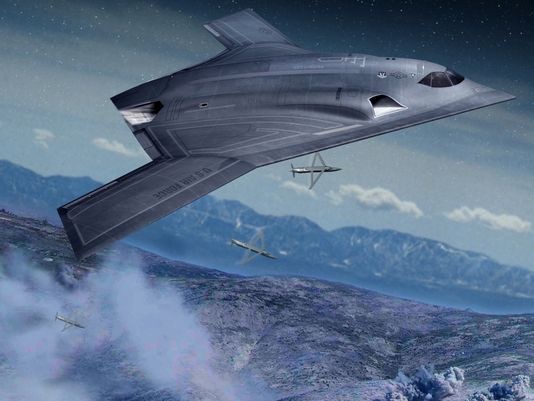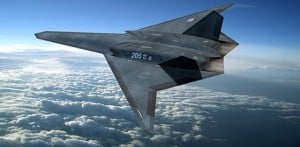What The B-3 Bomber Should Be
Posted on
The bomber has a long and distinguished history in the Air Force and its predecessor, the Army Air Corps. When the B-17 Flying Fortress was born, it was a controversial aircraft, but proved its worth when Nazi Germany controlled a continent and only the B-17 fleet could deliver strikes inside Nazi-controlled territory, thanks to the bomber’s range and payload.
But the road to the B-17 was not smooth. Before the war, fighter pilots and bomber advocates argued who was best and the bombers won, at great cost. B-17s flew unescorted into Nazi territory and their crews died in great numbers until long-range fighters were deployed. Since then, bombers and fighters have fought as interactive capabilities.
With the addition of the B-29, a new tool set was added to Pacific operations and it became the harbinger of things to come in the Cold War when the B-52 entered the fleet. Air Force bombers became “strategic” assets for their role as a central part of the nuclear triad. Then their usefulness in conventional conflicts became clear during the Vietnam War because of the amount of ordinance it could deliver.
Flash forward to 2015 and the B-52 is still around. It’s been joined by the B-1 and the B-2; all of which are playing roles unimagined at the time the B-52 was introduced. Today bombers perform tactical missions such as Close Air Support, thanks to precision-guided munitions and the sensors that can be used to guide them to their targets.
There has been an inversion of the strategic and tactical with the evolution of bombers, whereby small groups of aircraft can deliver strategic effects while conducting what would normally be described as tactical missions. Any new bomber like the Long Range Strike Bomber — generally becoming known as the B-3 — will be born in a period where the tactical and strategic are being redefined.
Although the new bomber is not going to be designed as a leap-ahead capability — since it will depend mostly on existing technologies such as enhancements made over the years to the B-2 — the B-3 is not just a successor to to the B-2, any more than the Osprey was a replacement for the CH-46. As Marine Lt. Col. Berke – the first F-35B squadron commander who also flew F-22s — has put it: “The Osprey is the chronological successor to the CH-46 but that is about it. It compares in no other way.”
The B-3, which will be built either by a Boeing-Lockheed team or Northrop Grumman, will enter a fleet in the midst of a revolution in air combat. Sea and air operations are now inextricably intertwined with air power, so much so that airpower is the ubiquitous enabler for 21st century combat operations. With the introduction of the F-35 global fleet, a re-norming of airpower is underway and an offensive-defensive enterprise is being created for the US and its allies to prevail against wide-ranging global threats.
Modern systems such as the F-35 create a grid so individual aircraft can operate in an area as a seamless whole, able to strike or defend simultaneously. This is enabled by what we’ve dubbed the evolution of C5ISR (Command, Control, Communications, Computers, Combat Systems, Intelligence, Surveillance, and Reconnaissance).
The B-3 is not simply going to provide more ordnance over greater distance to do strategic missions; it is about reinforcing and enabling greater capabilities for a radically different combat air force. Range and payload will be important elements of the basic platform, as will leveraging new concepts of stealth to provide low observability. But that is simply a foundation.
- First, the bomber needs to be capable of drawing upon the sensor rich environment being delivered by the global F-35 fleet, unmanned systems, and both American and allied ISR assets.
- Second, it needs to have a C2 system whereby it can obtain and provide tailored information to the warfighter engaged in a mission.
- Third, with the scalable force, it will need to be able to provide battle management capabilities for more forward-deployed or shorter-range assets.
- Fourth, the weapons revolution is accelerating, and over time, different weapons could well be placed on different platforms, so that the B-3 will need to able to not simply to manage the weapons it has onboard organically, but to be able to operate in a sensor-enabled strike environment, where it is a key asset but not necessarily the lead or even most important asset.
- Fifth, not only will the B-3 become a nuclear delivery vehicle but a deterrent asset able to work with the combat air force to deliver timely and effective strikes against nuclear powers like North Korea before they can use their missiles and weapons against US and allied targets.
In other words, the B-3 is part of the re-norming of airpower, a key enabler of the forward deployed F-35 global enterprise, a key element in both living off and providing targeted information, and key user and provider of sensor enabled weapons, and a key deterrent weapon against second nuclear age powers.
This has little to do with the B-17, somewhat more like the B-52 but not really about building a powerful organic strategic asset like the B-2. It is about being a highly effective enabler of more effective longer-range engagement operations, which can effectively tap into joint or coalition airpower.
For example, fifth generation aircraft and missile defense systems can find targets for the weapons on the B-3. It can then function as the battle manager for integrated air operations. This means that that the sensors, the C2 and information management capabilities of the bomber are a crucial element of its capability.
At the heart of shaping an offensive-defensive enterprise is what one might call the S3Revolution. Sensors, stealth and speed enable the air combat enterprise to find, kill and respond effectively to the numerous threats that global powers and pop up forces can present to the US and its allies.
As the central force in the air combat enterprise, the B-3 can ensure the United States has the upper hand with the Chinese in a 21st-century strategic engagement. The bomber, acting as the battle manager, provides a new kind of presence, linked by highly interoperable, Lego-like blocks that can work with allies that allow for scalable forces with reach-back to U.S. capabilities in the littoral and the homeland. The bottom line: U.S. forces need to be highly connected and interoperable with our allies. The bomber will provide a core reach-back capability enabling the entire allied force.
It is not simply about being a powerful thing in itself — a bomber — but by providing significant enhancement of the capabilities of 21st century American and allied airpower.
Robbin Laird, a defense consultant, is a member of the Breaking Defense Board of Contributors and owner of the Second Line of Defense website.
Subscribe to our newsletter
Promotions, new products and sales. Directly to your inbox.


